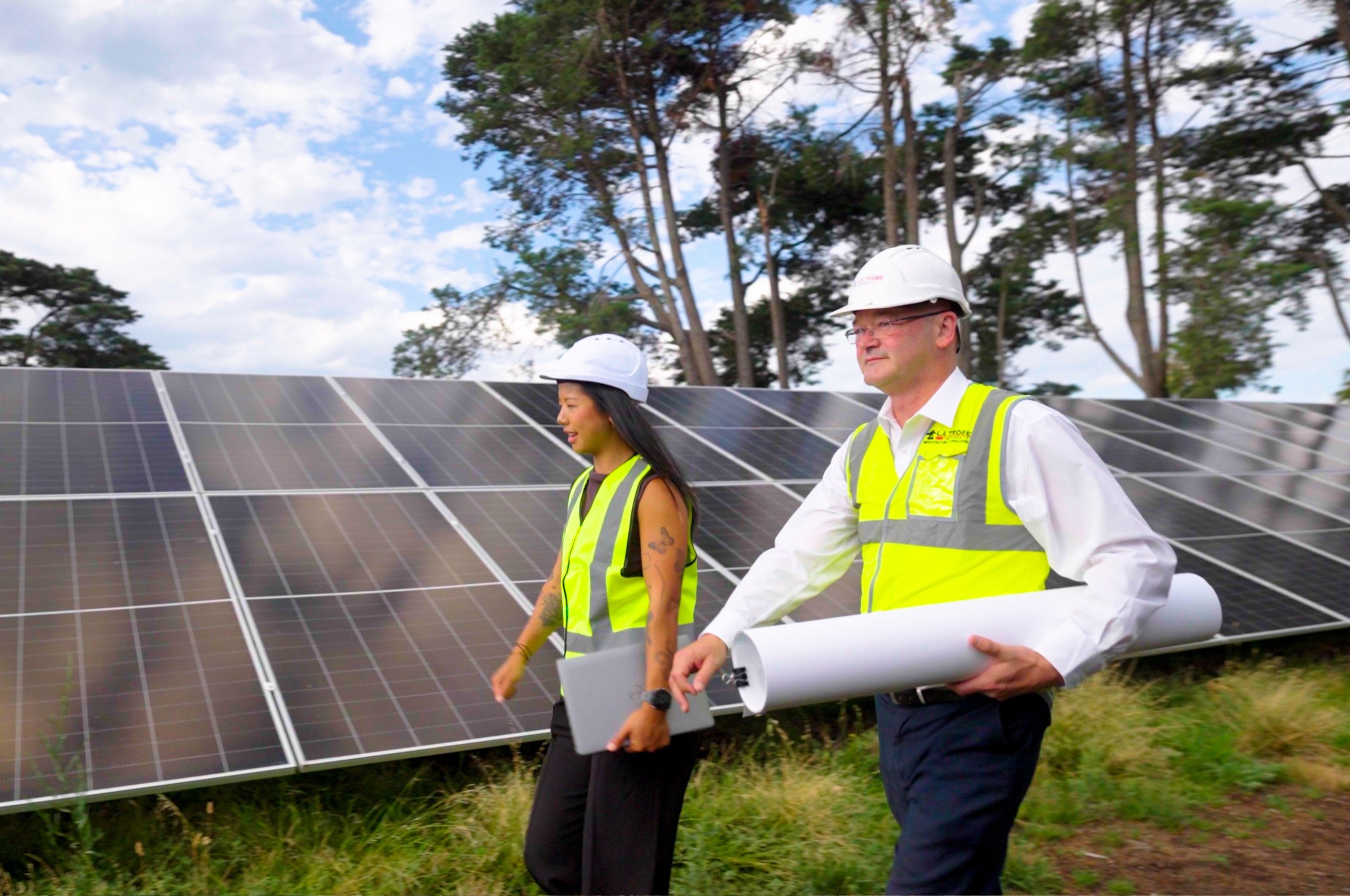The $10 million, 3.5-hectare solar farm marks a major milestone in the University’s ambitious journey towards achieving carbon neutrality by 2029 and is the landmark project in its Net Zero program.
La Trobe’s regional campuses in Bendigo, Shepparton, Albury-Wodonga and Mildura are already certified as carbon neutral and its new Shepparton campus is the University's first completely electric institution.
La Trobe has reduced its energy emissions by more than 50 per cent since the commencement of the Net Zero program in 2019. This project is another significant step towards the goal.
“La Trobe is a leader in higher education and this project is an exemplar of our ongoing commitment to investing in sustainability and the environment,” Vice-Chancellor Professor Theo Farrell said.
"This investment will deliver ongoing emissions and cost savings to the University for the next 25 years."
The solar farm features more than 4300 solar panels and is constructed on 11,250 square metres of solar-generating area, producing the equivalent energy of 600 household systems.
It includes a 2.9-megawatt solar energy system paired with a 2.5-megawatt-hour Battery Energy Storage System (BESS), taking total solar generation for the Bundoora campus to 5.8 megawatts.
The farm generates enough power each year to keep the MCG’s light towers illuminated for 11 consecutive years and is set to slash the University’s total energy emissions by a further 15 per cent, taking overall emissions reduction to more than 65 per cent – or 35,000 tonnes - since the launch of La Trobe’s Net Zero program.
More than 98 per cent of the power generated at the site will be used at the Bundoora campus, significantly reducing energy costs and emissions. The site will also be connected to the grid, enabling La Trobe to provide support when required to help avoid power issues in the community.
In addition to sustainable progress in power, work at the solar farm is also boosting La Trobe's biodiversity.
The University is planting 40,000 plants and 600 trees as part of the project, increasing vegetation on the site by 200 per cent, with a focus on indigenous species from La Trobe’s Nangak Tamboree Wildlife Sanctuary.
The solar farm site will also serve as a ‘living lab’ for a La Trobe-led research project that will investigate the viability, yields and quality of lavender grown in land shared with solar energy generation (known as ‘agrivoltaic’ systems), to optimise the productivity of the land.

Net Zero at La Trobe
The launch of the solar farm caps a strong two years for the Net Zero program.
La Trobe’s four regional campuses were certified as carbon neutral in 2022. The University’s new Shepparton campus, launched in February, is its first fully electric campus, supporting efforts to invest in electric infrastructure to reduce La Trobe's environmental footprint.
The University has successfully issued its inaugural green bond ($175 million) along with a $195 million Sustainability Linked Loan.
In 2024 the University announced a commitment to 100 per cent renewable electricity through its Power Purchase Agreement.
The agreement allows La Trobe to purchase 100 per cent green electricity and is a another significant towards beating its 2029 Net Zero goal.
La Trobe was recognised with its best result in the QS Sustainability Rankings, scoring a place in the global top 10 for the Impact of Education indicator and ranking 145th in the world overall for 2025.
The QS rankings build on La Trobe’s success in the latest Times Higher Education (THE) Impact Rankings, where it positioned itself as a global leader in research, teaching and community engagement aligned to key United Nations Sustainable Development Goals (SDGs).
La Trobe was 1st in Australia and 5th globally for its focus on food security, its commitment to tackling food waste on campus and in addressing hunger among students and community (SDG).
The University also ranked 10th globally for Gender Equality (SDG5) and 12th globally for its work on Good Health and Wellbeing (SDG3).
SOLAR FARM FACTS:
- At 3.5 hectares, the solar farm is the largest urban solar installation in Victoria.
- There are 4,300 solar panels, constructed on 11,250 square metres of solar-generating area.
- It includes a 2.9-megawatt energy system paired with a 2.5 megawatt/4.5 megawatt/hour Battery Energy Storage System (BESS). This takes total solar generation at Bundoora to 5.8 megawatts.
- The farm generates the equivalent power in a year that it would take to keep the MCG’s light towers illuminated for 11 consecutive years.
- The University will use more than 98 per cent of the power generated by the solar farm.
- The solar farm produces the equivalent energy of 600 household systems.
- It will reduce total university energy emissions by more than 15 per cent.
Caption: Net Zero Executive Director Andrew Jennings and Environmental Management System Advisor Xiao Yan Li.
Images and video are available on request.
Media inquiries:
Robyn Grace – r.grace@latrobe.edu.au, 0420 826 595



